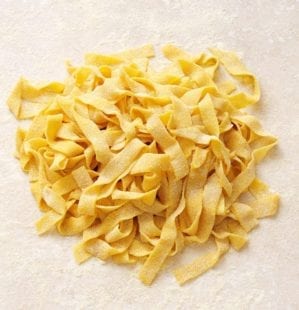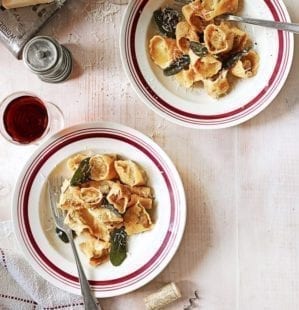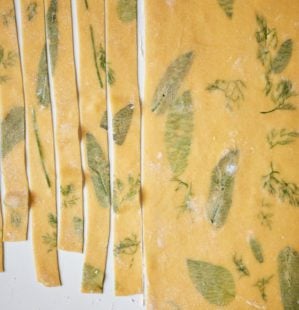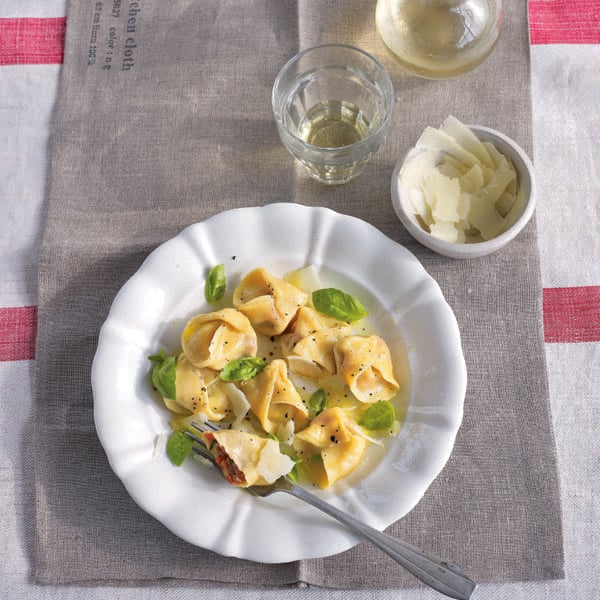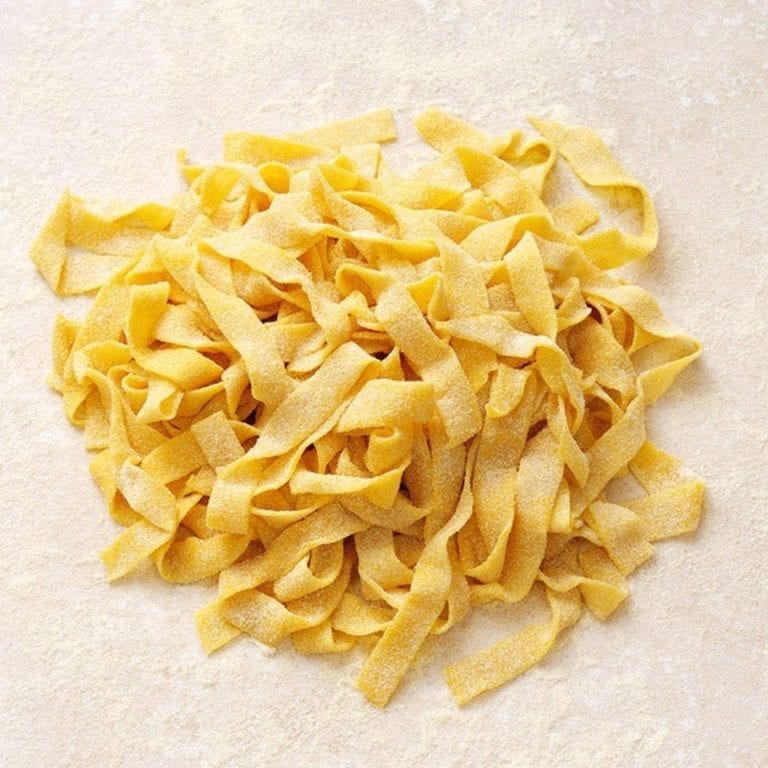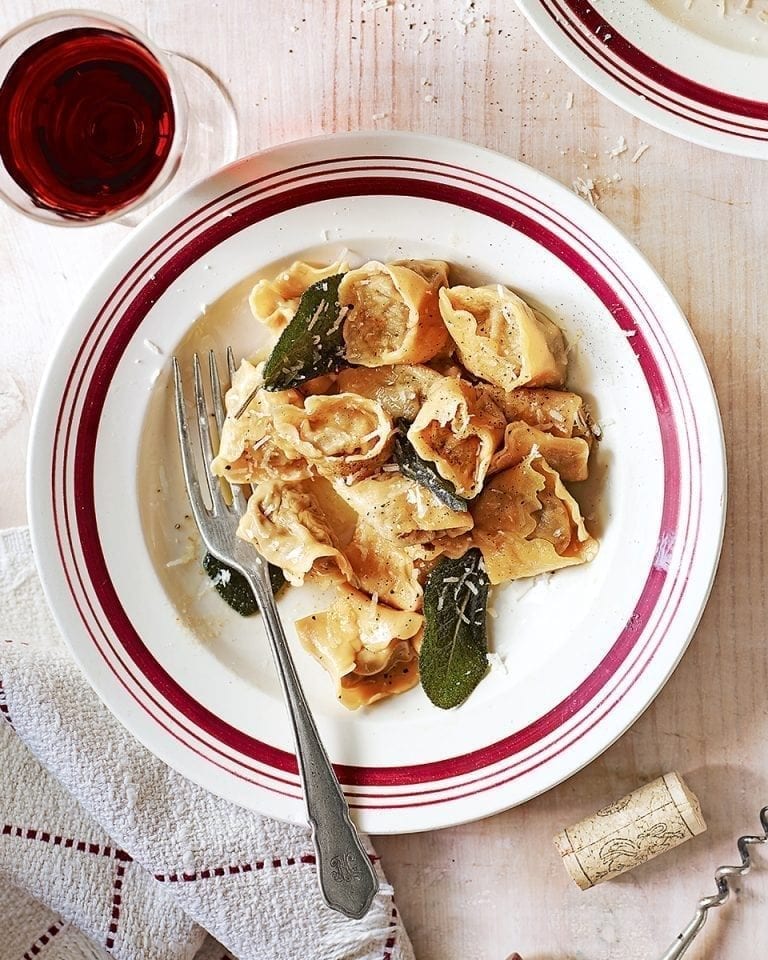How to make homemade pasta
Giorgio Locatelli says: “When you make pasta at home, you have the satisfaction of knowing all the ingredients that went into it.” Here’s his recipe.
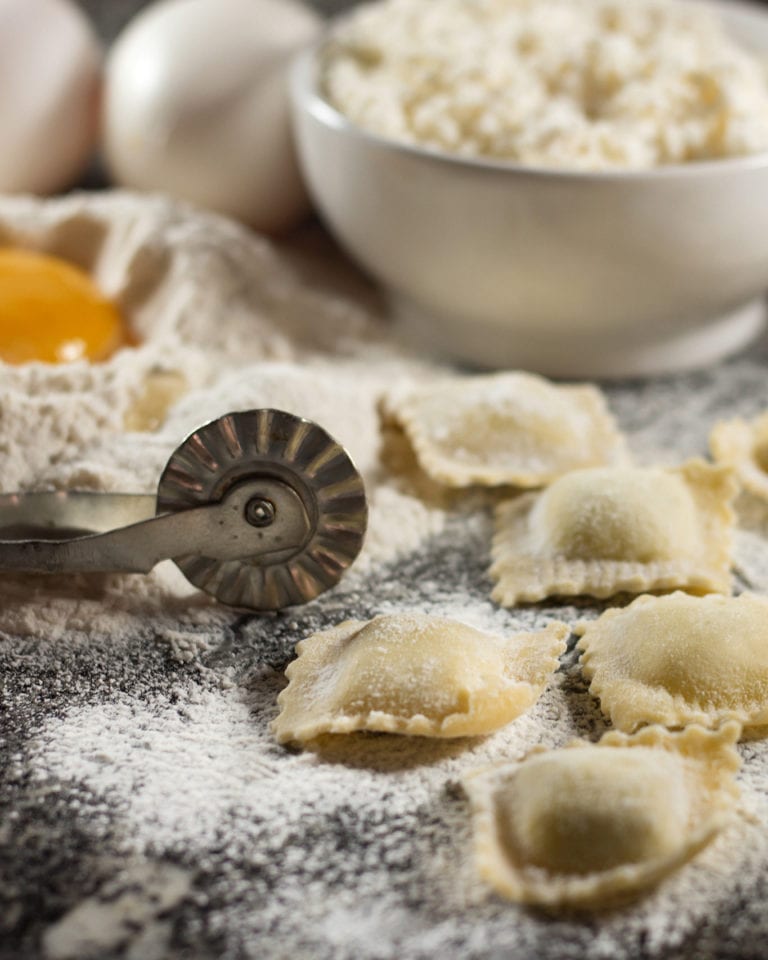
For about 400g fresh pasta you’ll need:
- 300g ‘00’ pasta flour
- Pinch of salt
- 3 large eggs, plus 2 large egg yolks, at room temperature
How to make fresh egg pasta:
Takes 30 minutes to make, plus 1 hour’s resting
- Preferably make the pasta by hand – especially if you are making a relatively small quantity like this, which will be difficult for a food processor to mix well. Sift the flour into a clean bowl, then turn it out into a mound on a clean surface and make a well in the middle. Sprinkle a pinch salt into the well, and add the eggs and egg yolks.
- Have a bowl of water on one side, so you can wet you hands, to help bring the dough together if it is being stubborn towards the end of kneading. To begin, break the yolks with the fingertips of 1 hand, then begin to move your fingertips in a circular motion, gradually incorporating the flour, until you have worked in enough to start bringing it together in a ball. Then you can start to work the ball of dough by pushing it with the heel of your hand, then folding back on itself, turning it a little clockwise, and repeating, again and again, for about 10 minutes, wetting your hands if it helps, until the dough is springy and smooth, but still feels quite firm and difficult to work. Set aside.
- N.B. If you are using a food processor, sift the flour into a bowl, add a pinch of salt, then start the machine, and slowly add the egg yolks, followed by the whole eggs. Keep the motor running slowly, or it will heat up the pasta too much, and also ‘beat’ rather than mix. Once the dough has come together, take it out and put it on a clean work surface.
- Don’t worry if the dough feels hard; after it has relaxed for a while it will be perfect. Divide the dough into 2 balls, wrap each in a damp cloth, and allow to rest for about 1 hour before use.
Rolling the pasta
- Roll the first ball of dough with a rolling pin (keep the other covered by a damp cloth) until it is about 1cm thick and will go through the pasta machine comfortably. (if it is too thick, the pasta machine will have to use too much force to make it go through – it will damage the machine and squeeze out too much moisture in the process, so the pasta will be dry). There isn’t an exact number of times you will need to feed the pasta through the machine – each time you make it, it might be slightly different (and not every pasta machine has the same number of settings), but use the next few steps as a guide and, after a while, you will get the hang of rolling the pasta.
- Put the machine on the first (thickest) setting to start with, then feed the piece of pasta through the machine, turning the handle with 1 hand and supporting the dough as it comes through the rollers. Then change to the second setting, and feed the pasta through again. Repeat another 2-3 times, taking the setting down one step each time. Don’t worry if the pasta appears slightly streaky, this should disappear as you carry on rolling it.
- Next, fold the strip of pasta back on itself, put the machine back on its first setting and feed the pasta through. Repeat 3-4 more times, again taking the setting down 1 each time, and you will see that the pasta begins to take on a sheen. As it begins to get longer, you will find you have to pull it very gently, so that it doesn’t begin to concertina. You shouldn’t need to dust it with flour, unless you feel it is too soft and likely to stretch too much.
- Now you need to cut your strips in half. Put one half under the damp cloth, then fold the length of the other strip into 3, bringing 1 end in and the other over the top of that, so that the pasta is the same width as the machine. Roll it with the rolling pin, so it is no more than 5mm thick, then put the machine back on the first setting and feed the pasta through – this time widthways not lengthways. The idea of changing direction is to put equal elasticity and stretch in the pasta. Keep feeding it through this way, taking it down 2-3 settings as you go.
- Finally, fold the pasta back on itself, then put the machine back on the first setting, and take it down again through the settings until it is about 1.5mm thick. By now, the pasta should be nice and shiny, with no lines in it, and you are ready to cut it into strips – either by hand, or by using a cutter attachment on your machine. Or use it to make filled pasta. It is best to use each sheet as soon as it is ready, before starting to roll the rest of your dough.
Taken from ‘Made In Italy’ by Giorgio Locatelli.
Now you’ve made the pasta, take a look at some of our recipes to use it.
Subscribe to our magazine
Food stories, skills and tested recipes, straight to your door... Enjoy 5 issues for just £5 with our special introductory offer.
Subscribe
Unleash your inner chef
Looking for inspiration? Receive the latest recipes with our newsletter
